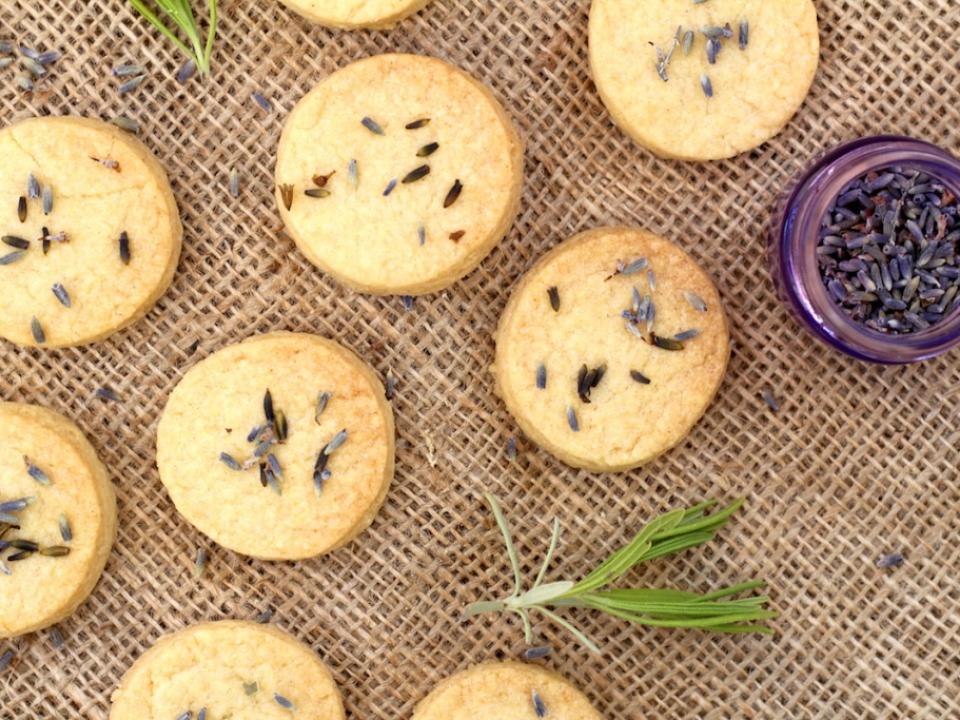Ingredients
Makes 16 small shortbread rounds
- 175g Plain flour
- 50g Caster sugar
- 125g Butter, cubed
- 1 tsp Lavender flowers *
* Use flowers specifically grown for consumption.
Method
- Preheat an oven to 160 degrees Celsius. Prepare a lined baking tray.
- Begin by soaking the lavender flowers in one teaspoon of water. Set to one side.
- In a mixing bowl, stir together the flour and sugar. Add the cubed butter and begin to rub the ingredients together. Once well combined, the mixture will begin to come together.
- Turn out on to a lightly floured surface and roll out until 1cm thick.
- Drain the lavender flowers and scatter them over the top of the biscuit dough, gently pressing them in with a flat palm. Using a biscuit cutter, cut in to 16 small circles. Lay out on the baking tray.
- Bake for 15 minutes or until the shortbread is light golden in colour.
- Transfer to a cooling rack. Once cool, store in an airtight container for up to two weeks, or two months if kept in the freezer.





